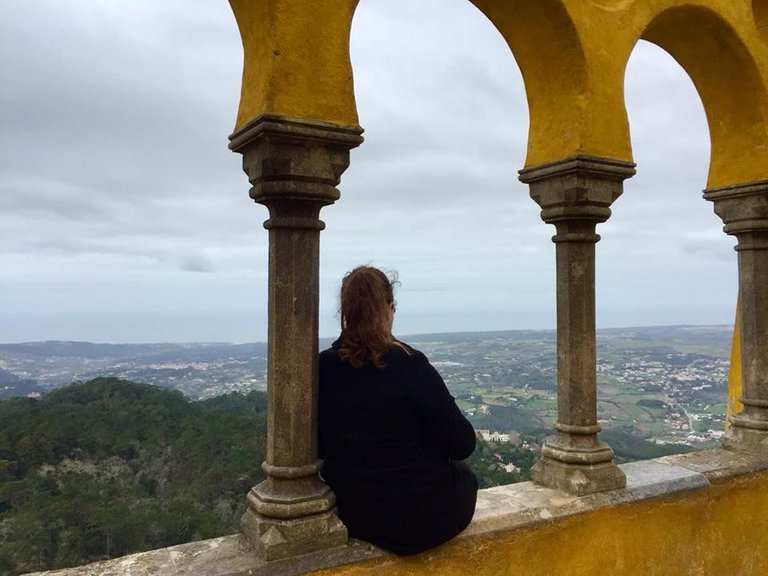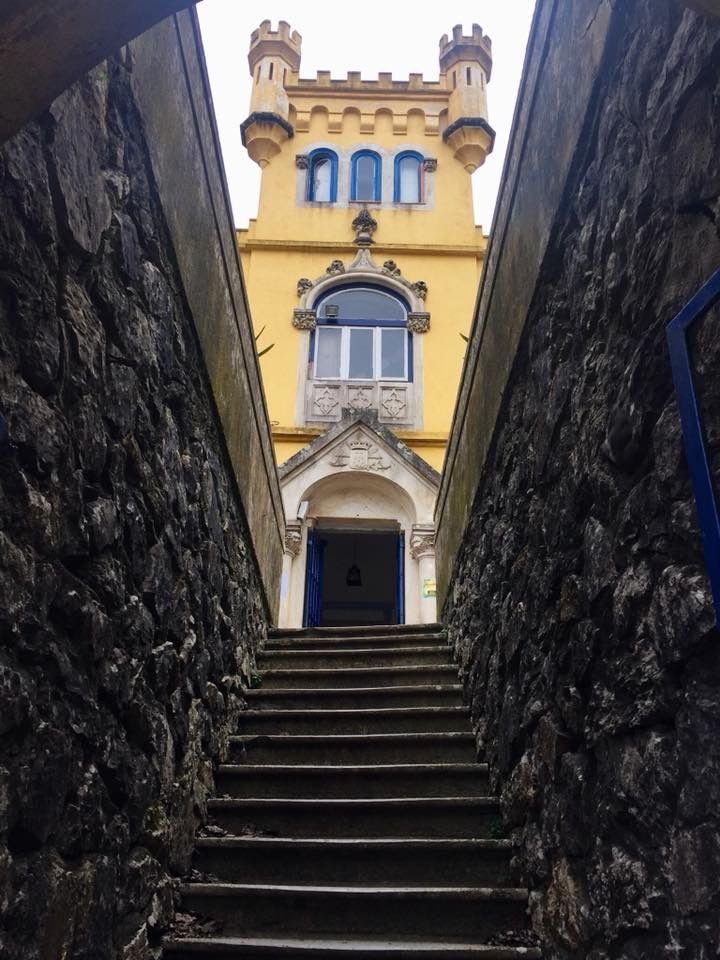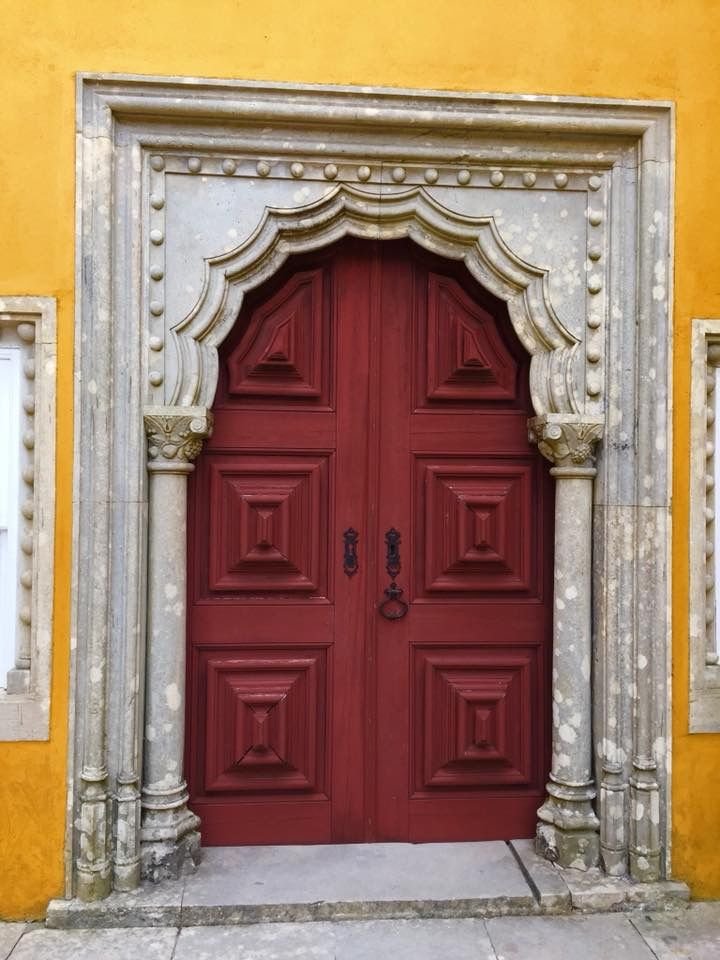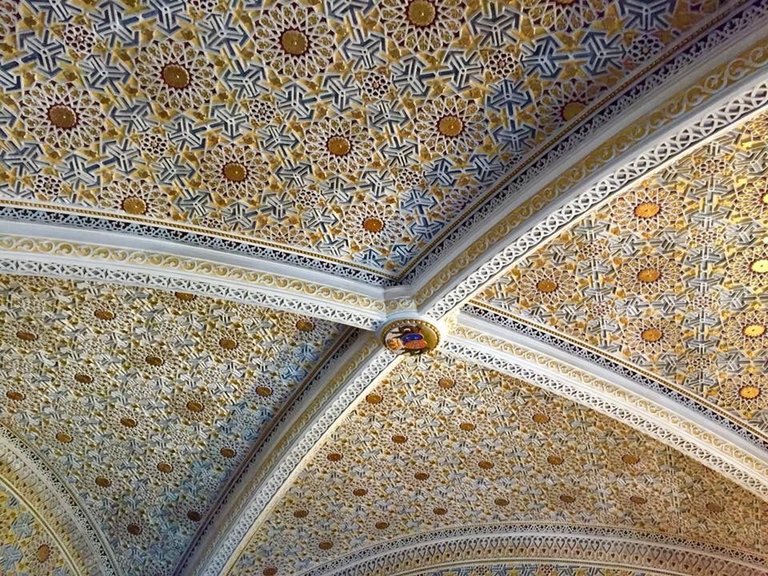
Today I am going to take you back in time to a fairy tale village and national park in the mountains near the capital city of Portugal, Lisbon. About a 30 minute train ride from the city centre takes you to a quintessential place called Sintra, a visually pleasing village situated along the Atlantic Coast. It became a UNESCO world heritage site in 1995. With its romantic 19th century architecture it’s no wonder why it’s my favourite place in Portugal so far.



I would recommend, if you only have one day, that you hire a car as some sites are fairly spaced out. However do not fret, there are many hop on, hop off tours and a local bus service that conveniently stops at the majority of the attractions. However if you have more time, I’d recommend walking as it gives you not only a better feel of the place but the opportunity to discover secret gems that you may not have done if you decided to drive.



Sintra certainly has a colourful history. With its invasions, it’s left a massive imprint on its historical villages through many architectural flavours such as a mix of Renaissance, Baroque, Moorish, Gothic and Manueline styles. From the cobbled narrow, windy streets, colourful buildings to its many detailed and tiled walls, there is something new to discover around every corner.



Before colonies based on human occupation, class and kingdoms, Sintra, meaning bright star or sun was inhabited with several tribal communities with Mediterranean origins. These tribes from the iron and stone ages were the first people, evidently to occupy this beautiful land. As many invasions started to occur, with the Romans ruling until 5AD and the Christian crusader’s bitter battle against the Moors in 1147, much of the romantic and colourful historical buildings that you see today leaves today’s visitors with a virtual insight into what life might have been like for those who occupied the land before us.


As European Kingdoms began to establish and rule many areas around Europe and the ease to begin to travel vast distances, the villages of Sintra have seen many different monarchy’s and reigning Kings and Queens rule the area, all of which have left their piece of history. With the Romans building their cobbled stone streets and the Moorish using its colourful tiles, the village and national park is a walk back in time.

Sintra’s architectural masterpieces are spread widely around the national park. As I only went on a day trip, I only scratched the surface of this place. Therefore if you have an extra day I’d definitely recommend spending it exploring the coastline. My favourite place visited was the romantic and eclectic Pena palace, a colourful romantic castle built on top of the mountain overlooking the National Park, with Lisbon being sighted in the far distance.


This palace was built exclusively for Ferdinand II of Portugal in the 14th century, although the castle wasn’t completed until 1854. In the 18th and 19th century the palace was used as a residential quarter in the summer for the reigning monarchy’s and their families of the time. The village however housed many aristocratic families and was the perfect vacation spot for the wealthy. My favourite part about the castle are the colourful, fine and intricate details on the walls, furniture and the building itself.



Today however, the palace is a major Portuguese tourist attraction with ‘Parques de Sintra’ welcoming more than 3.1 million guests, 21.65% more than the previous year. As Sintra is becoming a major tourist destination in Europe, I would definitely recommend going either in winter or in the shadow seasons as the crowds and long lines would in my opinion, negatively affect your visit. As I went in the middle of winter the beauty of only seeing a handful of people while walking the National Park made it much more serene. It is also good to note that the president and other government officials frequent the palace often on special occasions.



Sintra village, the administrative centre of the area is an aesthetically pleasing place to go and get yourself lost in. It’s beautiful buildings, shops, cafes and restaurants makes it a perfect romantic getaway to stay. The village itself houses an array of historical monuments such as museums, statues and palaces. In 1975 Sintra village was unfortunately effected by the 9.0 magnitude earthquake in which many deaths occurred and architectural structures damaged.



Most people who visit Sintra only visit the village and Pena Palace, however the National Park, with its spectacular greenery, exotic flowers and hidden chalets and cottages made for a great walk. Not only that, but I was also able to capture an impressive view of the castle from the bottom. The Chalet of Countess of Elda is a cute Norwegian styled building hidden amongst the trees, whilst the beautiful but tiny cottage that housed the garden keeper back when the royal families stayed in the palace is surrounded by lush gardens, a place That I could certainly get used to. There was also a stable that still houses today many horses. I certainly spent some time here patting them.




Many famous people, authors, writers, poets and artists have all left their lasting imprints and impressions of Sintra widely known. Hans Christian Anderson, a famous Danish author of his time who found his many writing inspirations here stated that Sintra is the ‘most beautiful place in Portugal’, while Lord Byron an historical English poet and politician describes this place as his ‘glorious Eden’. However, Luis de Camoes’ the most well known Portuguese poet of his time based his poem ‘Os Lusiadas’ on this aesthetically pleasing place.



Sintra, one of the oldest villages in Portugal and a photographers paradise should definitely be the ‘go to’ place for those who wish to discover many of Portugal’s gems. There is certainly more for me to discover such as the Castle of the Moors, Quinta da Regaleira and much of the sites along the coastline, but for now I am content with the natural and man made beauty I was able to discover on my short journey to Sintra. It was definitely the best birthday present I had given myself.



What a magical place you have taken us too. Your photos are outstanding which makes it feel like we are there with you. This was a very enjoyable post. Thank you
Thank you @sunscape I do enjoy taking photos. I am glad you enjoyed my post.
@originalworks
Wow! It’s like you’re in a real fairytale. :)
I know. It was beautiful!
Wow beautiful place and so much history! I am planning on going to Lisbon in May so I will make sure that I take a trip here. Thanks for the inspiration :)
No problems. No trip to lisbon is complete if you don't go to sintra I say, haha
Sneaky Ninja Attack! You have been defended with a 4.78% vote... I was summoned by @karliesadventure! I have done their bidding and now I will vanish...Whoosh
This post has received a 14.56% upvote from thanks to: @karliesadventure.
thanks to: @karliesadventure.
For more information, click here!!!!
Send minimum 0.010 SBD|STEEM to bid for votes.
You got a 1.59% upvote from @buildawhale courtesy of @karliesadventure!
If you believe this post is spam or abuse, please report it to our Discord #abuse channel.
If you want to support our Curation Digest or our Spam & Abuse prevention efforts, please vote @themarkymark as witness.
You got a 11.24% upvote from @upmewhale courtesy of @karliesadventure!
Thank you for collaborating with me to promote this post as explained at https://steemit.com/steemit/@jerrybanfield/10-ways-to-fund-a-steem-growth-project.
This post has received a 9.86% upvote from @aksdwi thanks to: @karliesadventure.
Congratulations @karliesadventure! You have received a personal award!
Click on the badge to view your Board of Honor.
Do not miss the last post from @steemitboard:
Congratulations @karliesadventure! You received a personal award!
You can view your badges on your Steem Board and compare to others on the Steem Ranking
Do not miss the last post from @steemitboard:
Vote for @Steemitboard as a witness to get one more award and increased upvotes!
I love this place.